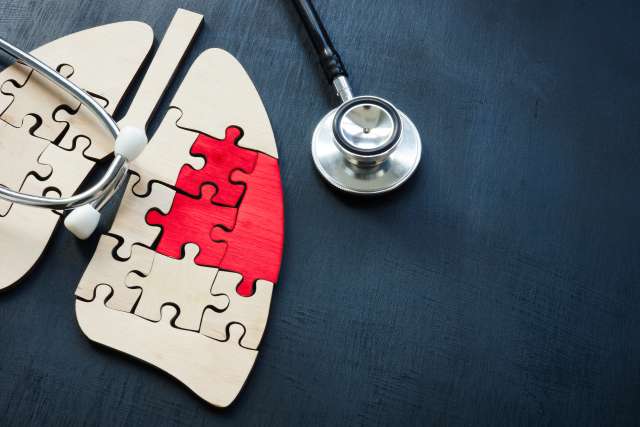Your joints are the reason you can move and function, but years of running, climbing stairs and using your hands can take a toll.
More than 32 million adults in the United States live with osteoarthritis (OA), a joint disease that occurs gradually as the cushioning around your joints wears down. It can cause worsening pain, stiffness and swelling. There’s no cure for OA yet, but there are ways to manage the symptoms and slow their progression to improve quality of life.
One way to reduce OA pain is medication, which may include:
- Oral pain relievers, such as nonsteroidal anti-inflammatory drugs (NSAIDs), which reduce swelling and inflammation and are available over the counter or by prescription
- Topical creams or gels, which provide temporary pain relief
- Injections of either corticosteroids (to reduce inflammation) or hyaluronic acid (to provide cushioning) into the space around the joint
But according to the National Council on Aging, the most effective strategy for reducing pain and improving mobility is often a mixture of pharmaceutical treatments and lifestyle changes. In many cases, non-medication treatments can fill in the gaps that medication can’t reach.
How to manage arthritis naturally
Even small lifestyle changes can make a big difference for your joints. The best strategies can help you:
- Improve mental health because the challenges of OA may lead to stress, anxiety or depression
- Manage body weight, since every pound of weight loss provides four pounds of relief for your knees, according to the Arthritis Foundation
- Reduce pain and stiffness, improving your ability to move and function
If you live with OA, consider incorporating any or all of these practices:
1. Physical activity
Moving your body is hands-down one of the best things you can do for your joints. It can help you:
- Build strength
- Increase your range of motion
- Manage your weight
- Provide stability
Make sure to choose joint-friendly workouts that include:
- Balancing and stretching, such as yoga
- Strength training with resistance bands or light weights
- Low-impact activities, such as walking, water workouts, cycling or gardening
Your goal should be to move your body every day. See if your insurance covers gym memberships or fitness classes. Your community may also offer arthritis management resources such as group or individual fitness programs.
2. Dietary changes
Changing what you eat may help you manage weight, but certain food choices can also decrease inflammation and slow the progression of OA. The typical Western diet — high in saturated fat and refined carbs — is strongly associated with OA symptoms.
Certain nutrients and spices, such as vitamins D and K, ginger and turmeric, may help improve OA symptoms. But several studies found that eating a Mediterranean diet — which focuses on whole foods and excludes inflammatory foods such as red meat, sugar and most dairy — has significant benefits for people with OA, improving:
- Inflammation
- OA progression
- Pain and stiffness
- Physical function and mobility
3. Physical and occupational therapy
Health care professionals commonly prescribe physical and occupational therapy to help patients with OA. They can both help you protect your joints and improve your quality of life:
- Occupational therapy (OT) helps you perform everyday tasks and modify your living environment to reduce movements that trigger your pain.
- Physical therapy (PT) helps with movement, strength and balance. It teaches you to lift safely, use stairs and minimize joint strain.
Your therapist may recommend assistive devices to help you with daily functions even if you have stiff joints. Braces and walking aids can help with stability and balance.
4. Tai chi
Tai chi is an ancient martial arts practice that involves gentle movements, meditation and controlled breathing. Researchers continue to find positive associations between tai chi and managing arthritis:
- A 2021 review of research suggested that tai chi may improve the ability to walk and maintain posture in older adults with knee OA.
- A 2020 review of research concluded that both tai chi and yoga significantly improved pain, function, stiffness and quality of life in OA patients for weeks beyond treatment.
- A 2021 study found that tai chi improves mental and physical health in patients with knee OA.
5. Acupuncture
Acupuncture uses needles to stimulate specific points in the body to alleviate pain. There’s no conclusive evidence proving that acupuncture may help relieve arthritis pain when used on its own. But a more recent study finds that combining acupuncture with oral medication may significantly improve function for people with knee OA. In some cases, the improved function lasted as much as six weeks after acupuncture treatment ended.
Before using acupuncture, talk to your primary care physician and check with your insurance to see if it’s covered. Also, be sure to use an experienced provider with high-level training who meets state licensing requirements.
6. Water therapy
Submerging yourself in water relieves pressure on your joints. It’s one reason water exercises are highly recommended for people with OA.
Hydrotherapy expands on that principle and involves sitting in warm tap water in a spa or tub. Studies show that using hydrotherapy in conjunction with PT may improve pain, function and quality of life more than PT alone.
When doing hydrotherapy at home, the Arthritis Foundation recommends:
- Add salt, such as Epsom salts or Dead Sea salts, to replicate mineral-rich baths.
- Keep water warm, between 92 and 96 degrees Fahrenheit.
- Loosen muscles by gently stretching or kneading your muscles while soaking.
When to get help for arthritis pain relief
Consult your primary care physician whenever you have persistent or worsening arthritis-related pain. If the OA is severe, joint replacement surgery may be an option. But in more moderate cases, changes and tweaks to your treatment plan can help.
Your health care provider can recommend or prescribe alternative therapies, community resources or support groups. Arthritis pain is different for everyone, and it may take some trial and error to figure out the medication and lifestyle changes that work best for you.



